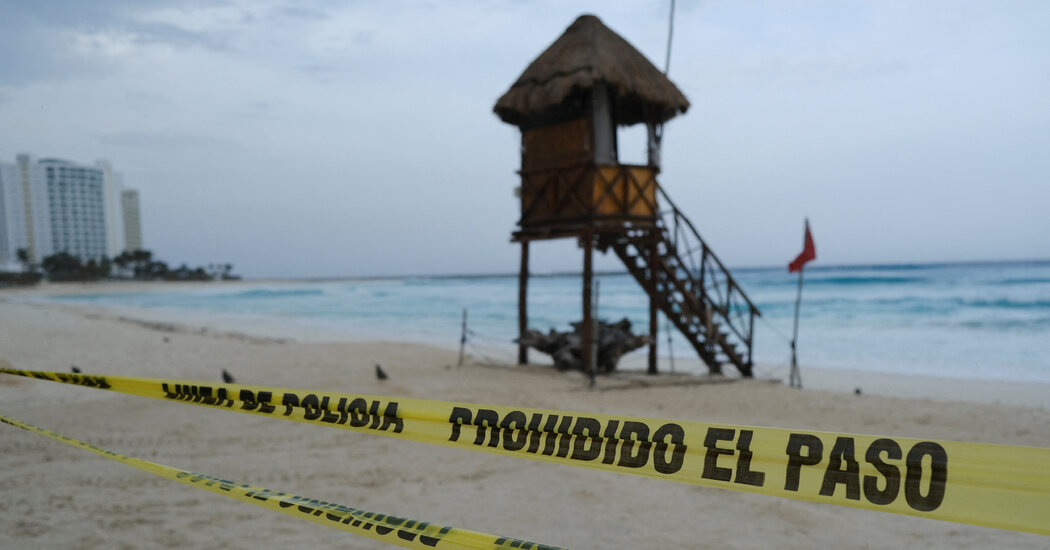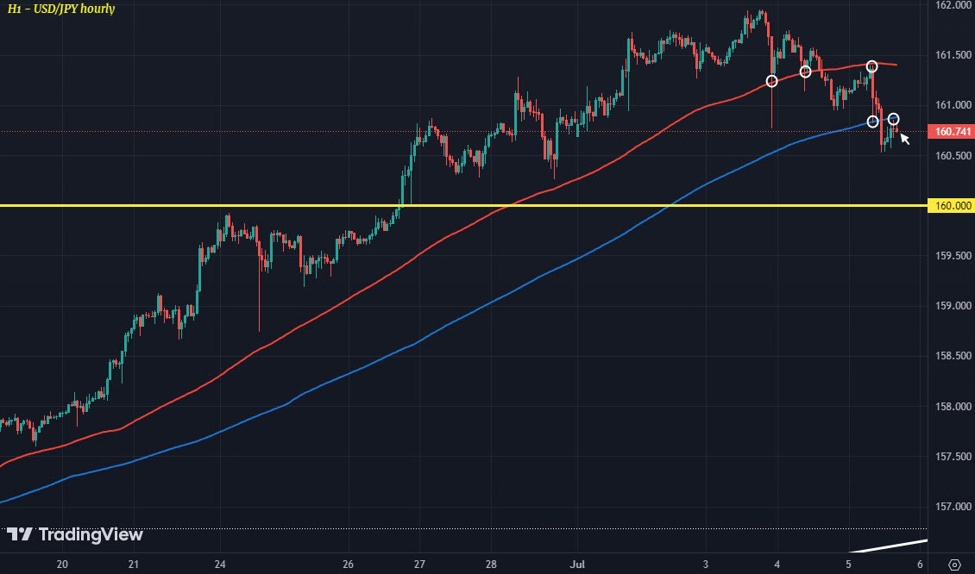Hurricane Beryl was churning toward the Yucatán Peninsula in Mexico at Category 3 strength early Friday after tearing through the eastern Caribbean, where it left islands flattened, communities inundated and at least eight people dead.
The storm, the earliest Category 5 hurricane ever recorded in the Atlantic, had weakened to Category 2 strength on Thursday, but it regained force in the Caribbean Sea, with maximum sustained winds up to 115 miles an hour, according to the National Hurricane Center. It was expected to make landfall in Mexico later on Friday morning.
With the center forecasting “dangerous” storm surges and hurricane-force winds, the Mexican authorities were taking no chances. The government said on Thursday that it had deployed more than 13,000 workers and members of the armed forces, along with rescue dogs, and had set up mobile kitchens and water-treatment plants in Quintana Roo, a southern state facing the Caribbean that may be the first to feel the storm’s impact.
After the hurricane moved on from Jamaica, residents emerged from shelters there to take in a landscape of farmland that had been devastated, homes that had sustained damage and roads that were covered with toppled utility poles and foliage.
“The whole place mash up,” Steve Taylor, a resident of the low-lying coastal town of Mitchell Town, told a local television station.
St. Elizabeth, a farming region known as the country’s bread basket, was hit particularly hard. “Southwest St. Elizabeth is facing complete devastation,” said Jamaica’s agriculture minister, Floyd Green.
Still, as brutal as Hurricane Beryl was, Jamaican officials surveying the destruction said it could have been still worse.
“The damage was not what we had expected, and so we’re very grateful for that,” Prime Minister Andrew Holness told CNN on Thursday. “I think Jamaica was spared the worst.”
So far, officials said, the storm appeared to have taken few lives in the Caribbean since first making landfall on Monday, in Grenada.
Forecasters were predicting that Mexico would be hit not just once, but twice by the hurricane. It was on track to cross the Yucatán Peninsula on Friday, and then, after traversing the Gulf of Mexico, reach the coast of the northern state of Tamaulipas.
Some evacuations were underway in Tulum and Felipe Carrillo Puerto, areas that officials feared would face the brunt of the storm’s force.
In Cancún, a popular vacation spot, yachts were clustered in an inland waterway for protection.
Anders Aasen and his family arrived on Thursday at Mexico’s Cancún International Airport after traveling for almost 24 hours from Norway, unaware that a hurricane was also arriving there in a matter of hours.
“At the hotel, they haven’t given us any information about what will happen or what we have to do,” said Mr. Aasen, 42, an entrepreneur, who planned to travel to Cancún and Tulum with his wife and three children. He said the family had already spent $20,000 on their trip.
Most of the tourists who arrived at the airport on Thursday said they had not been informed in advance about the storm and added that neither travel agencies nor hotels had notified them about safety measures.
In the Gulf of Mexico, Shell Oil said it was evacuating nonessential workers from a floating oil platform. The platform, called Perdido, sits about 200 miles south of Galveston, Texas, in about 8,000 feet of water. The company said there were “no other impacts on our production” from the hurricane.
The storm emerged as the earliest Category 5 hurricane on record in the Atlantic Ocean, according to Philip Klotzbach, a meteorologist at Colorado State University who specializes in tropical cyclones. The previous record was set by Hurricane Emily on July 17, 2005, he said.
Meteorologists say that Hurricane Beryl’s quick escalation was a direct result of above-average sea surface temperatures, and a harbinger of what may be an especially difficult hurricane season.
Residents in the Cayman Islands were largely breathing a sigh of relief after Hurricane Beryl passed by at Category 3 strength on Thursday morning without making landfall. There were no reports of significant damage, injuries or fatalities. Officials said, however, that they were still assessing the storm’s full effects.
In Jamaica, power and water supplies were slowly being restored to the areas hit hard: the eastern and southern parishes of Kingston, the capital; Portland, and other neighborhoods. More than 60 percent of customers were without water and light as of Thursday morning, representatives of the main providers told local news media. Mobile phone service was still unavailable in large parts of the country.
Jamaica’s Sangster International Airport, in the tourism area of Montego Bay, was expected to reopen later on Thursday, the transport minister said in a statement. The main airport, Norman Manley, remained closed for repairs but was expected to reopen on Friday.
The government said public-sector workers could return to work, while some commercial institutions have called in their employees. Jamaica’s central bank advised that it would remain closed until Friday. Schools have shut for the summer.
Rebuilding appeared to be a far more arduous task on islands that were hit even harder by the storm, especially in Grenada. Satellite imagery showed flattened houses and buildings without roofs, with the islands of Carriacou and Petite Martinique bearing the brunt of the damage. Officials said roughly 98 percent of the buildings there had been destroyed.
In Argyle, a popular tourist town with dozens of vacation rentals in Carriacou, before-and-after images showed structures reduced to rubble. The island’s docks, usually filled with boats, were empty. And along the northeast coastline of Carriacou, damage continued far inland, satellite imagery showed.
Tourism is one of the island’s main sources of income, and the airport and some hotels were reopening as cleanup operations began, the Grenada Hotel and Tourism Association said.
Lynsey Chutel, Daphne Ewing-Chow, Johnny Diaz and Ricardo Hernández Ruiz contributed reporting.















